Theatre and Spectacle: Lubaina Himid’s Fabric
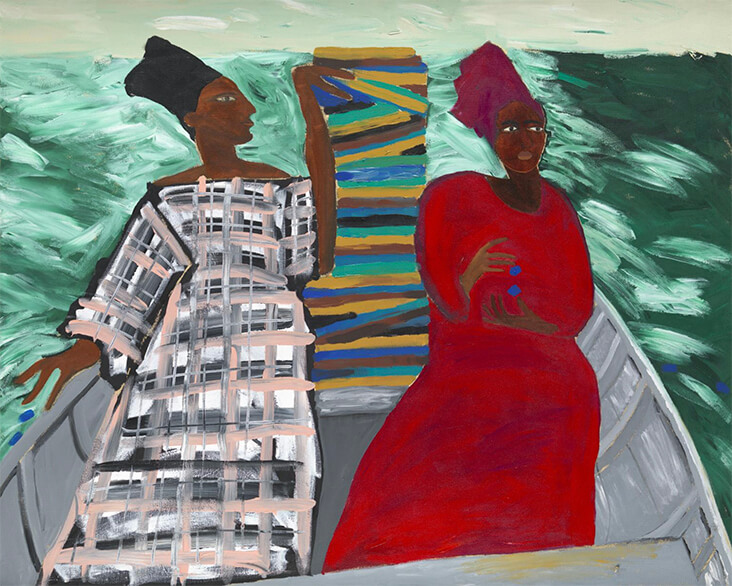
Between the Two my Heart is Balanced, 1991 (depicting ‘the struggles for identity and belonging faced by migrants travelling across oceans and seas’)
British artist Lubaina Himid makes art with an immediately striking impact, featuring riotous displays of clashing pattern and print. Her love of bold, bright textiles is evident throughout the many strands of her practice, which have varied from painting to sculpture, drawing and installation. These dazzling textiles are, on the one hand, a theatrical device for Himid, allowing her to create arresting objects and scenarios that entice viewers in with their performative potential. But they also communicate with us at a deeper level, telling rich and complex stories about life in post-colonial society.
Himid’s affinity for fabric began early in childhood. Her mother was a textile designer and she soaked Himid’s young mind in the visual wonders of pattern, taking her to visit the lively and eventful department stores and museums across London. The various homes they lived in across London were also filled with colourful worlds of delight waiting to be discovered, as Himid recalls, “In the places where my mother and I lived in London there were always inaccessible cupboards containing sumptuous bolts of fabric. These were the treasure troves in which I began to understand how patterns could speak to each other, and how those wearing them could communicate without words.”
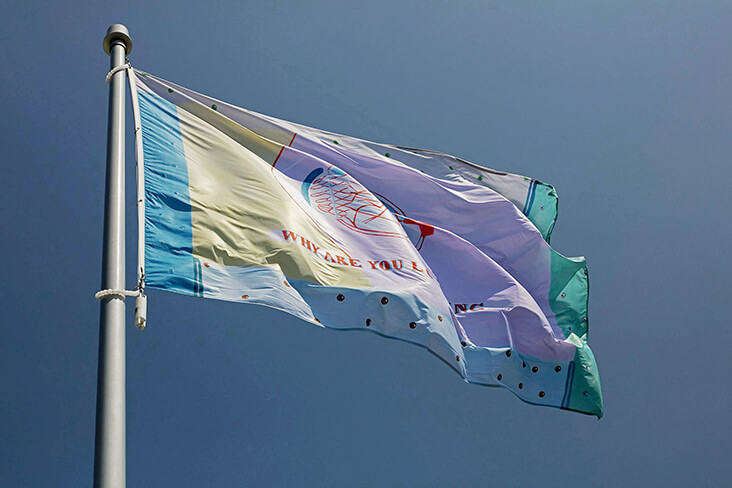
Lubaina Himid, Why Are You Looking, 2018, flag commission for the Great Exhibition of the North, at BALTIC Centre for Contemporary Art
In 1976 Himid studied Theatre Design at Wimbledon College of Art, and it was here that she first became drawn to the radical Black politics that were rising around her. This fascination with history and politics led Himid to embark on an MA in Cultural History from Royal College of Art. Rather than heading into theatre work, Himid pursued various different avenues, and one of her first jobs as a young graduate was sewing costumes for London’s Royal Opera House. In the years that followed Himid’s interest in politically engaged art emerged alongside her involvement with the Black Arts Movement, where she befriended British African-Caribbean artists Keith Piper, Marlene Smith, Eddie Chambers and Donald Rodney.
It was during this time that Himid first began making her famed painted wooden cut-outs, fictional characters wearing bold, vivid clothing and staged together as if caught mid-conversation. She has also made many painted portraits of similar characters, people who she says are marginalised in a society still rippling with undercurrents of racism. Multicoloured, expressive clothing becomes a powerful means of expression for these characters, allowing them to transcend the oppressions of discrimination that tries to define them. Tellingly, Himid calls the textiles she works with “speaking clothes”, which give voice to the silenced or ignored.
It is only in recent times that Himid’s career has taken off, earning her various accolades including the Turner Prize in 2017, a CBE in 2018, and a retrospective solo show at Tate Modern in 2021. This sudden burst of recognition has given Himid the courage to open out into new creative arenas, particularly involving the narrative and political properties of fabric. East-African Kanga fabric is of particular interest to Himid, a richly patterned garment usually worn by women, featuring a multi-coloured border, and an inscribed motto. Himid has been exploring her own interpretation of Kanga fabrics as part of a large ongoing series, emblazoned with her own contemporary motifs and quotes from poets including James Baldwin, Sonia Sanchez, Essex Hemphill and Audre Lorde. She hangs these Kanga fabrics like flags or banners across gallery walls, allowing them to be read as a powerful form of expression and communication. Himid is particularly interested in how Kangas relate to women’s history, and their means of expressing stories about their own lives, noting how, “Kangas are women’s clothes and they’re quite often making remarks about men and the life we lead.”
Another fabric that has occupied Himid’s mind is Dutch Wax fabric, with its multi-layered history that is woven into the history of colonialism. One of Himid’s most striking installations of recent times is Lost Threads, made in 2021 as part of the British Textile Biennial at Gawthorpe Hall’s Great Barn. 400 metres of Dutch Wax fabric were draped across the space, swooping up and down with a spectacular theatricality miming the waves of water that have carried this fabric to so many continents through the centuries. This installation is, like so much of Himid’s practice, an exploration into what she has called “the formulas, codes and families of pattern.” She sees the language of fabric as a form of communication that goes way beyond words, one that can strike into the heart of our human experience, noting, “… today I use these codes to speak in a secret language about subjects that I find it impossible to clearly express or paint in any other meaningful way.”





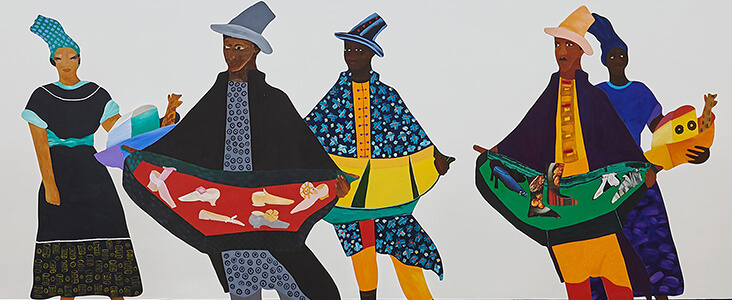
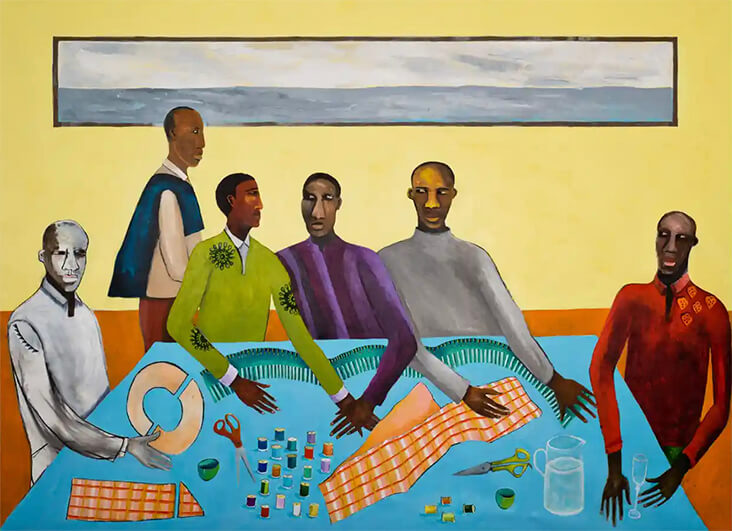
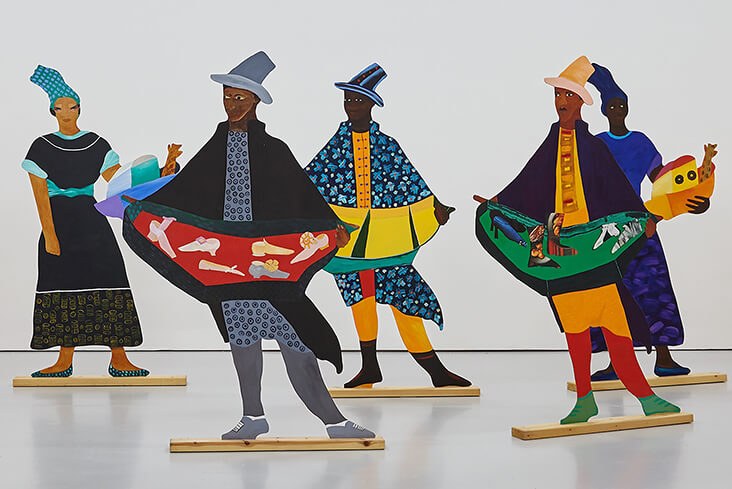
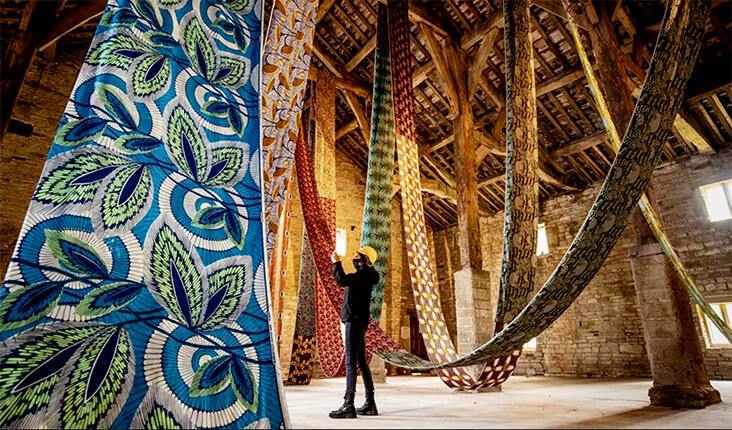



















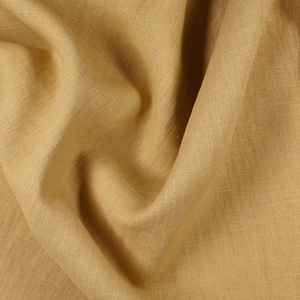

















4 Comments
Melva Garrison
Very much enjoyed the article and information. Thank you sew much!
Vicki Lang
I love the bold use of color and the designs on the fabric are fabulous. I image it’s great to understand the messages in her designs. Thank you for another beautiful article.
Kelly Morrissey
Thank you for another brilliant, fascinating, informative article. With you I feel as if I’m taking a master class in the culture of textile arts.
Suzanne Burgess
I was going to leave a comment, but Kelly Morrissey said it better than I could. Thank you Rosie for your interesting contributions.